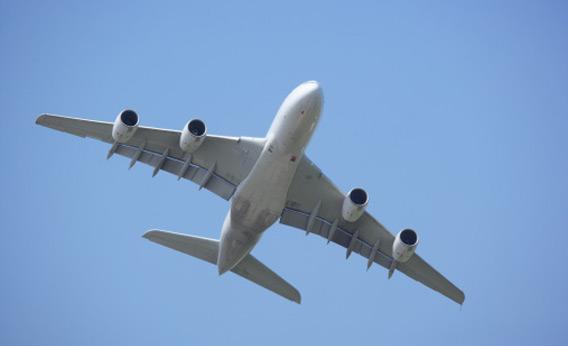Severe turbulence forced a New York-bound flight to divert and land shortly after leaving Houston on Tuesday. Passengers were thrown into the ceiling and then back onto the floor. Can turbulence cause a plane to crash?
Yes, but it’s very unlikely these days. In the past, turbulence has stressed planes beyond their tolerances. In 1966, for example, a British Overseas Airways captain veered from his original flight path out of Tokyo so that his passengers could get a look at Mount Fuji. As the Boeing 707 approached the mountain, it experienced unexpectedly powerful winds—probably in excess of 140 miles per hour—that tore the tail fin apart and downed the plane. Aircraft design has come a long way since then, though, and aerospace engineers say modern aircraft are extremely unlikely to suffer a similar fate. Today’s commercial airliners are designed to withstand forces one-and-a-half times stronger than anything experienced in the last 40 years of flying, and advances in detection systems help pilots avoid severe turbulence.
There are two types of turbulence, although they feel basically the same from inside the passenger cabin. Storm-related turbulence results when water vapor condenses into droplets, releasing energy that heats the surrounding air. As the heated air rises, it becomes less dense, causing it to rise further and more rapidly. The resulting updraft is what buffets a plane. Storm-related turbulence is relatively easy to identify with Doppler radar or simply by observing cloud formation. Pilots can avoid turbulent air by changing course or altitude, or they can minimize its effects by slowing down. Stormy air can still play a role in aviation accidents, though. In 2009, Air France flight 447 flew into an area of storm activity. Attempting to steer the plane clear of the weather, the pilot seems to have sent the plane into an aerodynamic stall that caused it to crash into the Atlantic. Severe turbulence, along with an airspeed sensor malfunction, likely contributed to the plane’s erratic movements.
Clear air turbulence, the sneakier variety, occurs when two air masses moving at different speeds or in different directions contact each other. A classic example is waves of air breaking as they pass over mountain peaks. Planes flying across the jet stream also experience clear air turbulence. This kind of turbulence is much more difficult to detect, and pilots are responsible for notifying air traffic control when they encounter it. (When the pilot says, “We’re expecting a smooth ride out to [your destination] today,” he means there are no storms and no one flying the route has reported clear air turbulence.) Severe clear air turbulence caused the aforementioned 1966 crash in Japan and has even torn parts off of military planes.
While planes are designed to survive even the most severe forms of turbulence, improper maintenance can leave them vulnerable. After turbulence tore a wing off of Wien Consolidated Airlines flight 55 in Alaska in 1968, many considered the crash a freak natural accident. The National Transportation Safety Board investigation concluded, however, that the plane would have survived the winds if not for cracks that resulted from improper maintenance.
Turbulence may be extremely unlikely to down a commercial aircraft these days, but it causes plenty of injuries and even the occasional fatality. Dozens of flight attendants have been hurt in the last decade when their planes struck unexpectedly rough weather, and one passenger died in 1997 when she was thrown upward from her seat and collided with the armrest on the way back down.
Got a question about today’s news? Ask the Explainer.
Explainer thanks Ron F. Blackwelder of the University of Southern California.
